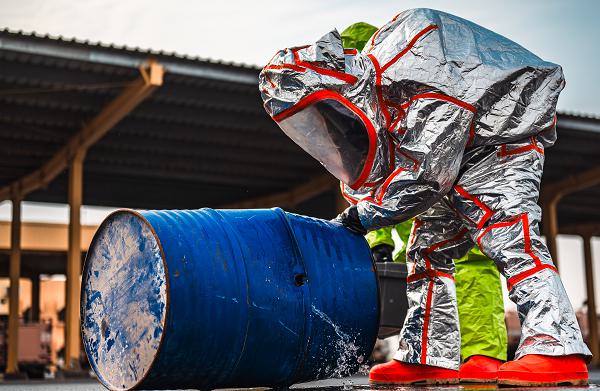
Central Command Area of Responsibility. (February 22, 2025): A hazardous chemical spill is dangerous, anywhere. When it happens aboard a warship, on a busy flightline, or on a submarine, the results can be catastrophic. In this photo by Airman 1st Class Zeeshan Naeem, Senior Airman Jonathan Cain, 379th Expeditionary Civil Engineer Squadron firefighter, deals with a simulated hazardous materials leak. How quickly and safely a spill is contained can be literally a matter of life and death.
Every branch of the military contends with hazardous materials given the nature of modern combat. When a spill occurs, HazMat teams immediately isolate the area and evacuate personnel to prevent further exposure. Wearing full body suits including gloves, respirators, and eye protection, the teams determine the nature of the contaminant and then develop a plan to contain it.
Once a spill is contained, the next step is to neutralize hazardous substances on individuals and their equipment. For most chemical exposures, decontamination is done through physical means, such as washing, scrubbing, or vacuuming . Other tools to neutralize contaminants include disinfectants, bleach, or light acids. Chemical spills are often covered with an especially absorbent material appropriate to the chemical contaminant.
In the case of biological contamination, HazMat teams use agents containing enzymes or bacteria that break down and remove contaminants. In some cases, sterilization techniques are employed to eliminate all microorganisms present.
The deadliest HazMat emergency is nuclear radiation exposure. America’s warships run on nuclear power and spent uranium is used in a variety of U.S. ammunition. That is why the military follows strict handling procedures for radioactive materials and has trained teams of professionals ready to respond to a radiation emergency.
A hazardous material spill, anywhere, can be deadly and the U.S. military is ready to respond.


